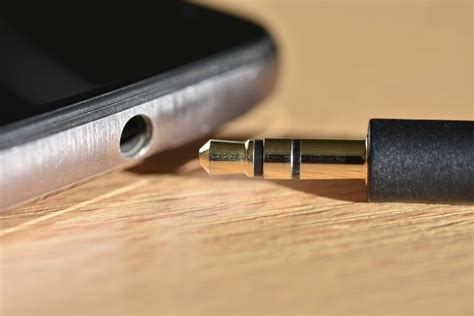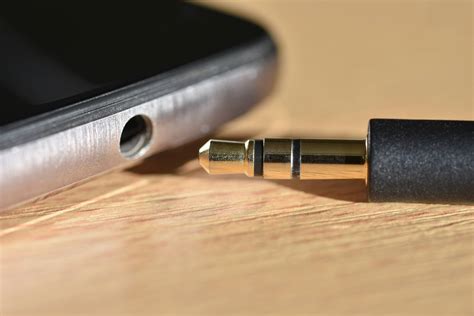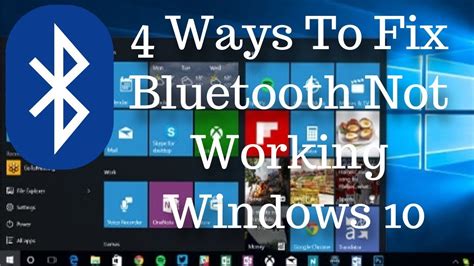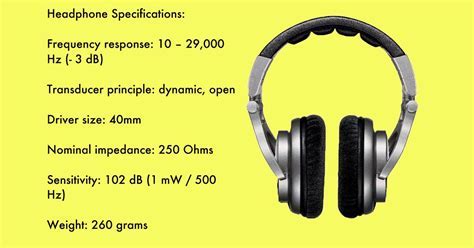Imagine being engrossed in your favorite song, podcast, or an important business call, only to find yourself struggling to connect your audio device to your mobile phone. It can be frustrating and time-consuming when the headphones you have at hand simply refuse to work with your phone. However, the reasons behind this compatibility issue are often more intricate than they initially appear.
In the era of rapidly evolving technology, where convenience and connectivity are key, it's no wonder that headphones can sometimes fail to integrate seamlessly with your mobile device. With the variety of audio connectors available on the market, ranging from traditional wired connections to the latest wireless technologies, finding the perfect match for your phone can be a daunting task. Manufacturers strive to create compact, stylish, and feature-packed smartphones, but these advancements can inadvertently introduce complexities when it comes to audio compatibility.
One of the key factors contributing to the challenges of connecting headphones to your mobile device is the diverse range of audio jacks and ports found on modern smartphones. Gone are the days when a single universal 3.5mm headphone jack served as the standard across all devices. Now, you may encounter different types of ports, such as USB-C, Lightning, or even proprietary connectors specific to certain brands. This fragmentation of audio connectivity standards can make it difficult to find a pair of headphones that sync seamlessly with your particular phone model.
Issues with Headphone Compatibility on Mobile Devices

When it comes to the compatibility of audio output devices, such as headphones, with our smartphones, there are certain puzzling phenomena that can make them seem incompatible. Understanding the reasons behind these compatibility issues can help us troubleshoot and find appropriate solutions.
1. Connectivity Interface: A primary reason for headphone incompatibility can be traced back to the connectivity interface used by the smartphone. Various mobile devices utilize different audio connectors, such as the traditional 3.5mm headphone jack, USB-C, or Lightning ports. Incompatibility arises when the headphone's connector does not match the port of the phone, leading to a lack of proper connection.
2. Impedance Mismatch: Every pair of headphones possesses a certain electrical impedance, measured in ohms. Mobile phones, on the other hand, have specific output impedance limits. If the impedance of the headphones exceeds the output impedance of the phone, it can affect the audio quality or may result in no sound being produced. Thus, impedance mismatch is another common reason for headphone compatibility issues.
3. Specialized Features: Some headphone models come with unique features that require specific software support or hardware integration in order to function properly. For instance, noise-canceling headphones may rely on the smartphone's operating system to provide the necessary sound-canceling algorithms. If the device lacks the required software or hardware support, these specialized features may not work as intended.
4. Digital vs. Analog Audio Conversion: In the world of technology, digital audio signals have become the norm, but some older headphones may still rely on analog signals. If a smartphone only supports digital audio output, it may not be able to properly convert the analog signal from the headphones, resulting in poor audio quality or no sound at all.
By understanding these underlying reasons for headphone compatibility issues, users can make informed decisions when selecting and using headphones with their mobile devices. As technology continues to evolve, proper comprehension of these issues becomes crucial to ensure seamless audio experiences.
Compatibility issues between headphone and phone models
When it comes to using headphones with your smartphone, it is not always a simple plug-and-play experience. The compatibility between your headphone and phone model can play a crucial role in ensuring a seamless audio experience.
There are various factors that contribute to compatibility issues between headphones and phone models. One common factor is the type of connector used by the headphone and the corresponding port available on the phone. While some headphones use a 3.5mm audio jack, many modern smartphones have transitioned to using USB-C or Lightning ports for audio connectivity. This difference in connectors can lead to compatibility issues, requiring the use of adapters or alternative headphones.
Another important aspect to consider is the compatibility between the headphone and the phone's operating system. Different phone models may run on different operating systems such as Android or iOS, and not all headphones are designed to fully support all operating system features. This can result in limited functionality or inconsistent performance when using certain headphones with specific phone models.
Additionally, variations in headphone and phone model specifications can also cause compatibility issues. Headphones may have different impedance levels, power requirements, or frequency response ranges, which may not be fully supported by the audio circuitry of certain phone models. These differences can result in distortion, low audio volume, or poor audio quality when using incompatible headphones.
To ensure compatibility between your headphone and phone model, it is recommended to consider the specifications and connectivity options of both devices before making a purchase. Researching the compatibility or seeking advice from professionals can help you select headphones that are specifically designed to work well with your phone model, ensuring optimal audio performance and compatibility.
- Consider the type of connector used by the headphone and the phone model.
- Take into account the compatibility between the headphone and the phone's operating system.
- Be aware of variations in specifications that may cause compatibility issues.
- Research and seek advice to ensure optimal audio performance and compatibility.
Issues with the phone's audio jack

One common problem that users may encounter when trying to connect headphones to their phones is a damaged audio jack. This issue can prevent headphones from fitting properly, resulting in poor or no sound output. The audio jack serves as the connection point for the headphones and the phone, allowing audio signals to be transmitted and received. When this jack becomes damaged, it can disrupt the seamless integration between the two devices.
A damaged audio jack on a phone can manifest in various ways. It may appear visibly broken or loose, making it difficult to establish a secure connection with headphones. Alternatively, the audio jack may still appear intact, but internal damage could affect its functionality. This can result in distorted sound, intermittent audio playback, or no sound at all.
The causes of a damaged audio jack can vary. Everyday wear and tear, such as frequent insertion and removal of headphones, can lead to the weakening of the jack over time. Accidental drops or impacts can also result in physical damage, affecting the jack's ability to function properly. In some cases, the use of incompatible or low-quality headphones can put undue pressure on the audio jack, leading to damage.
Repairing a damaged audio jack usually requires professional intervention. It may involve replacing the entire audio jack component or repairing the internal connections. Attempting to fix it oneself without adequate knowledge or expertise can further exacerbate the problem or cause additional damage to the phone.
To prevent a damaged audio jack, it is essential to handle headphones with care and avoid applying excessive force when inserting or removing them. It is also advisable to use compatible headphones that are designed for the specific make and model of the phone. Regular inspection of the audio jack for any signs of wear or damage can help identify issues early on and seek prompt assistance.
Incorrect insertion of the headphone plug
When it comes to connecting headphones to your mobile device, one common issue that can arise is the incorrect insertion of the headphone plug. This can prevent proper sound transmission and hinder your listening experience. Understanding the potential causes and solutions for this problem is essential in ensuring a seamless connection between your headphones and phone.
Bluetooth Connectivity Issues

When it comes to using wireless headphones with your mobile device, you may sometimes encounter difficulties connecting via Bluetooth. These can be frustrating and may prevent you from enjoying your music or other audio wirelessly. In this section, we will explore some of the common problems that can cause Bluetooth connectivity issues.
1. Pairing Problems: One of the main reasons why your wireless headphones might not connect to your phone is due to pairing problems. Pairing is the process of establishing a connection between your headphones and your phone. This involves enabling Bluetooth on both devices, putting your headphones in pairing mode, and performing the pairing process. However, if this process is not completed correctly, or if there are compatibility issues between the devices, you may experience difficulties connecting.
2. Interference: Another factor that can negatively affect Bluetooth connectivity is interference. Bluetooth operates using radio waves, which can be susceptible to interference from other electronic devices or physical barriers. If there are multiple devices in close proximity using the same wireless frequency or if there are walls or other objects obstructing the signal, this can weaken the Bluetooth connection and lead to disconnections or poor audio quality.
3. Software Issues: Software issues can also contribute to Bluetooth connectivity problems. This may include outdated or incompatible Bluetooth drivers on your mobile device or an outdated firmware version on your headphones. In some cases, a software update from the manufacturer can resolve these issues. However, if your devices are no longer supported with updates, you may need to consider alternatives such as using a different device or purchasing new headphones.
4. Distance Limitations: Bluetooth technology has a limited range, typically up to 33 feet (10 meters). If you move too far away from your phone while using wireless headphones, the Bluetooth connection may become weak or unstable. This can result in audio interruptions, loss of connection, or poor sound quality. Stay within the recommended range for optimal performance.
5. Battery Life: Low battery levels on either your phone or your headphones can impact Bluetooth connectivity. Make sure both devices are sufficiently charged before attempting to connect. If the battery is running low, it may cause intermittent connection issues or prevent the devices from connecting altogether.
In conclusion, Bluetooth connectivity problems can arise due to various factors such as pairing issues, interference, software problems, distance limitations, or low battery levels. Understanding these potential causes can help troubleshoot and resolve any issues you may encounter when connecting wireless headphones to your mobile device.
Software or firmware compatibility issues
One of the potential challenges that users may encounter when using headphones with their smartphones is related to software or firmware compatibility. This refers to the compatibility between the software or firmware installed on the phone and the headphones being used.
Software compatibility
The term "software compatibility" refers to the ability of the headphones to work effectively with the operating system and software applications installed on the smartphone. In some cases, certain headphone models may not be optimized or supported by the phone's software, leading to various issues.
For instance, the headphones may not be recognized by the phone, resulting in no sound output or limited functionality. Additionally, software conflicts or bugs can cause unexpected behavior, such as audio distortion or interruptions during playback.
Firmware compatibility
In addition to software compatibility, firmware compatibility can also play a role in the performance of headphones with a smartphone. Firmware refers to the software that is embedded in the hardware of the headphones. It determines how the headphones interact with the connected devices.
If the firmware of the headphones is not up to date or compatible with the smartphone's firmware, it can lead to various issues. These may include connectivity problems, limited functionality, or even complete incompatibility.
To ensure a smooth experience, it is recommended to check the compatibility of the headphones with the specific smartphone model and its operating system. Manufacturers often provide compatibility information or firmware updates that can address compatibility issues and improve performance.
Incompatibility with certain headphone features or specifications

When trying to establish a connection between your smartphone and a pair of headphones, you may come across difficulties due to their inability to work together harmoniously. This can be attributed to a lack of compatibility between the specific features or specifications of the headphones and your phone.
One possible case of incompatibility arises from differences in headphone jacks. Certain smartphones may only support specific types of headphone connectors, such as the traditional 3.5mm audio jack or the newer USB-C port. If your headphones utilize a different type of connector, they may not be able to physically connect to your phone, rendering them incompatible.
In addition to physical connectors, compatibility issues can also stem from differences in electrical specifications. For example, some headphones require a higher voltage or power output than what your phone can provide. In such cases, your phone may not be capable of driving the headphones adequately, resulting in poor audio quality or no sound at all.
Furthermore, incompatible features or functionalities between your headphones and phone can lead to issues. For instance, some headphones offer advanced features like noise-canceling or surround sound capabilities that rely on specific software or hardware support. If your phone lacks the necessary technology or software compatibility to enable these features, you may not be able to utilize them.
It's crucial to be aware of these potential incompatibilities before purchasing headphones for your phone. Checking the specifications and compatibility requirements of both your phone and the headphones can help ensure a seamless connection and optimal audio experience.
iPhone Headphones Not Working! 🔥[5 FIXES & TIPS!]
iPhone Headphones Not Working! 🔥[5 FIXES & TIPS!] 作成者: Lewis T 957,425 回視聴 4 年前 7 分 19 秒
Real Madrid vs. Bayern: Extended Highlights | UCL Semi-Finals 2nd Leg | CBS Sports Golazo
Real Madrid vs. Bayern: Extended Highlights | UCL Semi-Finals 2nd Leg | CBS Sports Golazo 作成者: CBS Sports Golazo 278,817 回視聴 1 時間前 15 分
FAQ
Why don't some headphones fit into my phone?
There are several reasons why some headphones may not fit into your phone. Firstly, the headphone jack on your phone may be damaged or clogged with debris, preventing proper insertion. Additionally, the headphones you are trying to use may have a different connector type than the jack on your phone. It is also possible that the headphones are not fully compatible with your phone's audio system, causing poor connectivity or audio quality.
What should I do if my headphones don't fit into my phone?
If your headphones don't fit into your phone, there are a few troubleshooting steps you can try. First, check the headphone jack on your phone for any visible damage or debris and clean it gently using a soft brush or compressed air. If that doesn't work, try using a different pair of headphones to see if the issue lies with the headphones or the phone. If the problem persists, you may need to consult a professional for further assistance or consider getting a compatible adapter.
Can I use wireless headphones if my phone's headphone jack is not working?
Yes, you can still use wireless headphones even if your phone's headphone jack is not working. Wireless headphones connect to your phone via Bluetooth, eliminating the need for a physical connection. Simply pair your wireless headphones with your phone through the Bluetooth settings, and you will be able to enjoy music or make phone calls wirelessly.
Why do some headphones work with certain phones but not others?
The compatibility between headphones and phones depends on several factors. One key factor is the type of connector used by the headphones and the headphone jack on the phone. Different phone models may have different jack designs, such as the traditional 3.5mm audio jack or newer USB-C or Lightning ports. Additionally, the headphone's impedance and sensitivity can affect compatibility with a phone's audio system. It is always recommended to check the specifications of both the headphones and the phone to ensure compatibility before making a purchase.
Are there any adapters available to make headphones fit into different phone models?
Yes, there are adapters available in the market that can help you make headphones fit into different phone models. These adapters usually convert the headphone connector from one type to another, allowing compatibility between various devices. For example, you can find adapters that convert a traditional 3.5mm audio jack to a USB-C or Lightning connector. However, it's important to note that using adapters may affect audio quality, so it's recommended to choose high-quality adapters from reputable brands for the best experience.
Why won't my headphones fit into my phone?
There could be multiple reasons why your headphones don't fit into your phone properly. One possible reason is that the headphone jack on your phone is damaged or blocked with dirt or debris. Another reason could be that you are trying to insert a headphone with a different connector type, such as a 3.5mm jack into a phone that only supports USB-C or Bluetooth connectivity. It's also worth checking if your headphone's plug is properly aligned with the jack, as sometimes a slight misalignment can make the connection difficult.




